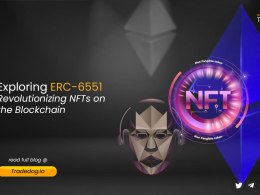Quick Links
Every blockchain network needs a Decentralised Exchange (DEX) where its users can invest, stake, and swap assets that are native to that particular protocol. Similar to how Binance Smart Chain offers PancakeSwap, Ethereum Network has Uniswap and Sushiswap, and Avalanche has Trader Joe.
What is Trader Joe?
Trader Joe, launched in August 2021, aims to be a one-stop shop for all DeFi services undertaken in the Avalanche network. According to CoinMarketCap, it has a current market worth $237 million dollars and $1.5 billion dollars in assets under management. Since its inception in June 2021, the exchange has attracted approximately $118.21 million in Total Value Locked (TVL).
How does Trader Joe work?
Despite the fact that Trader Joe is a recently launched DEX, the value of daily trading activity often exceeds the whole market cap of the JOE token. Its daily trading value varies greatly between 50 million dollars and up to 300 million in asset trading, swaps and other services. It offers a wide range of services, including crypto swaps and auto trades, as well as a variety of investment opportunities. Let us see how these work.
Trading
Trader Joe’s primary focus is on trading pairs. The platform has an easy-to-use user interface. Trade liquidity is derived from pools supplied by Liquidity Providers. These service providers can farm JOE. This serves as an incentive for them.
All trades are subject to a 0.3% charge. This includes 0.25% going to liquidity providers and 0.05% going to the JOE token farm.
Liquidity pools
Liquidity pools, as previously stated, get 0.25% of all trades. The liquidity pools contribute to the smooth exchange of two cryptocurrencies. The LP tokens are used to motivate users to contribute to these pools. These are incentives for liquidity suppliers.
The risk that providers confront is Impermanent Loss. This is the difference between the amount of the withdrawal and the amount of the deposit. As long as prices don’t revert to their original value, the loss is “permanent.”
Yield farming
Trader Joe’s yield farming process is quite common. This entails depositing Liquidity Pool tokens in order to get JOE token payouts. Users must go to Trader Joe’s farming page and select the pool to which they want to contribute.
Staking
Staking on the platform entails spending your JOE to gain xJOE, the exchange’s principal incentive for staking. As previously stated, 0.05% of each trade is allocated to the xJOE pool. This ideally suggests that each user can earn a greater number of xJOE by holding JOE.
DeFi lending protocol
Trader Joe’s lending protocol is supported by Banker Joe. This follows the Compound protocol. Tokens can be withdrawn at any time, as long as the outstanding debt is paid in full. The loan limit is determined by the collateral value, which users can increase by adding more funds.
Trader Joe NFTs
The Trader Joe NFTs are supported by the Joepegs Marketplace. It is currently one of the Avalanche ecosystem’s largest NFT marketplaces.
Joepegs has various intriguing auction settings, whitelisting, and display options. There is also an artist-focused support page with real-time information and extensive NFT filters. Trader Joe’s is also introducing its own NFT collection, CLUB JOEPEGS.
Benefits of Trader Joe?
Trader Joe’s is competing with a number of comparable DeFi services that have recently launched. It intends to entice users with substantial benefits. The platform is suitable for beginners. The team of Trader Joe has created numerous tutorials explaining it’s feature and making it easy for the user to take advantage of it. It’s safe and decentralised.
Transaction fee at Trader Joe is 0.3% for all trades, which includes 0.25% to liquidity providers and 0.05% to JOE token farms, which is at par with pancakeSwap, Sushi, 1inch Network i.e., DeFi dApps with low trading fees. They are also expanding its services by deploying an ethereum based scaling solution Arbitrum to capture new users.
It makes use of the fiercely competitive Avalanche network. The most unique feature developed on the platform is Rocket Joe. This feature allows crypto developers to launch their own token and bootstrap their Protocol owned liquidity. Finally, the platform is supported by a strong community and a skilled and responsive technical support team.
How to trade on Trader Joe?
To trade on Trader Joe DEX, you will need to follow these steps:
- Connect your Binance Smart Chain wallet to the Trader Joe DEX website. You can use any wallet that supports the Binance Smart Chain network, such as MetaMask, Trust Wallet, or Binance Chain Wallet.
- Deposit funds into your BSC wallet. You can buy Binance Smart Chain compatible cryptocurrencies on a centralized exchange, such as Binance or Coinbase, and then transfer them to your BSC wallet. Alternatively, you can use a decentralized exchange that supports BSC, such as PancakeSwap or BakerySwap, to swap cryptocurrencies directly on the BSC network.
- Once you have funds in your BSC wallet, navigate to the trading section on the Trader Joe DEX website. Select the trading pair that you want to trade, and enter the amount of cryptocurrency that you want to buy or sell.
- Set your desired price or select the market price to execute the trade at the current market price.
- Confirm the transaction and wait for it to be processed. You may need to approve the transaction on your wallet to authorize the trade.
- Monitor your trade and manage your risk accordingly.
What is the Trader Joe (JOE) token?
The Avalanche (ARC-20) network’s main utility token is JOE. The token is used to send value, pay fees, and gain access to network capabilities. You can stake and farm JOE to earn passive income. The token also serves as the principal reward token.
How to buy JOE cryptocurrency?
Trader Joe (JOE) is now available for purchase on the following exchanges.
Binance – Total token volume of JOE is approx 55 Lakhs. It is best for Australia, Canada, Singapore, the United Kingdom, and the rest of the world. Trader Joe (JOE) is not available to citizens of the United States.
Uphold – This is a top exchange for residents of the United States and the United Kingdom, offering a diverse choice of cryptocurrencies. Germany and the Netherlands are not permitted.
What’s the future of Trader Joe?
Trader Joe offers the ideal mix of features to attract users to the platform. The system has a familiar appearance that mimics a CEX, which improves the onboarding process even more. This DEX is designed to be a popular alternative for traders on Avalanche network since it is more secure, responsive, and easy to use.
Features like Liquidity Book AMM allows for zero slippage trade which would increase its prospects of user onboarding. They are continuously adding new features that would help Trader Joe retain its spot as the Go-to-DEX on Avalanche.









